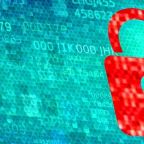A Close Call with a Hacked Email Account
Picture this: You’re in the middle of your day when suddenly, something feels off. You go to check your email and find yourself locked out of your primary email account. Your heart starts to race. Panic sets in. You try resetting the password, but nothing works. In that moment, your mind races to all the accounts tied to that email address—bank accounts, credit cards, work systems—and you start to feel like you’re losing control of everything. This is exactly what happened to Eric, a small business owner who relies on his email for everything from communicating with clients to managing invoices. For a brief moment, it felt like the entire world was closing in. He was convinced someone had gained control of his email account, and worse, it felt like a chain reaction was starting. His throat was dry, his mind flooded with questions: What if they’re accessing my other accounts? What if they’ve already stolen my identity? In a frantic rush, he began updating email addresses on his online billing accounts and other services. The stress was real, and the sense of helplessness was overwhelming. Luckily, in Eric’s case, it turned out that no one had hacked into his account. The situation was resolved, and he regained access. But the experience was a harsh reminder: it only takes one slip-up, one vulnerability, to feel like your entire digital life is spiraling out of control. In those moments, the anxiety and stress can be paralyzing.The Emotional Toll of a Cybersecurity Scare
When it comes to cybersecurity, it’s easy to think of hacking and online threats in technical terms—firewalls, encryption, multi-factor authentication. But for someone experiencing a possible breach firsthand, it’s about far more than the tech. It’s the sinking feeling in your stomach, the dry mouth, and the mental spiral of imagining your identity being used maliciously. The emotional toll is real, and it’s something many people don’t anticipate when it comes to online security. A potential breach like this can make you feel helpless and out of control. The idea that someone could have access to sensitive information without your permission, and worse, without you knowing it until it’s too late, is terrifying. This anxiety is only heightened by the fact that the internet plays such a central role in our lives today. We rely on it for banking, business, personal communications, and more. When that trust is shaken, it can be devastating.Managing the Stress in the Moment
If you find yourself in a situation where you believe your accounts have been compromised, it’s important to manage your stress and emotions effectively. Here’s how to handle it:- Pause and Breathe: Take a deep breath before you react. Your first instinct may be to panic, but slowing down and staying calm is crucial. Panicking can lead to rushed decisions or mistakes that could make the situation worse.
- Assess the Situation: Before jumping into action, take a moment to assess the actual severity of the breach. Are you sure your account has been hacked? Are there notifications from the service provider alerting you of suspicious activity? It’s important to gather information before acting.
- Take Action Quickly but Methodically: If you are locked out of an account or suspect unusual activity, prioritize changing passwords and enabling two-factor authentication. If your email has been compromised, contact your email provider for assistance in recovering the account.
- Triage Other Accounts: Make a list of important accounts tied to the compromised email. Focus first on financial and work-related accounts, and update their credentials to ensure they’re secure.
Preventing Future Incidents
Once the initial crisis has passed, it’s time to take steps to secure your digital life and regain a sense of control:- Use a Password Manager: A password manager is a must. It allows you to generate strong, unique passwords for each account and store them securely. This way, even if one password is compromised, your other accounts remain safe.
- Enable Two-Factor Authentication (2FA): Whenever possible, enable 2FA on your accounts. It provides an additional layer of security by requiring not just your password but also a code sent to your phone or an authenticator app.
- Regularly Audit Your Accounts: Periodically review which accounts are tied to your email and what data each of them holds. Close old accounts you no longer use and ensure that the most sensitive accounts (banking, email, work) have the highest level of security.
- Be Mindful of Phishing Attempts: Always double-check email addresses and links before clicking on anything suspicious. Phishing attempts are becoming more sophisticated, and they often target people’s anxiety and confusion to gain access to sensitive information.


























